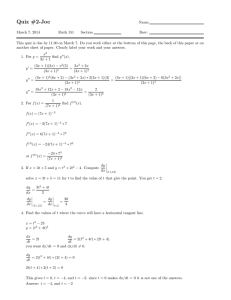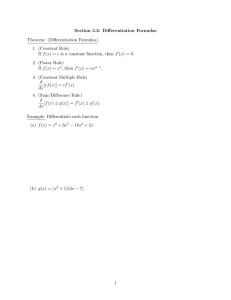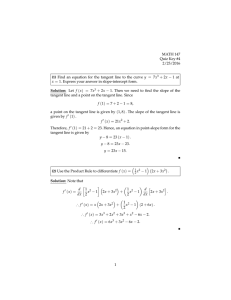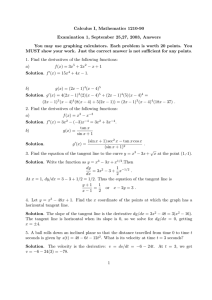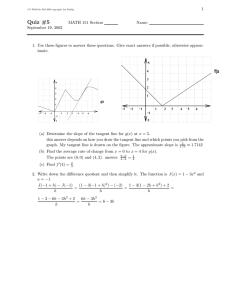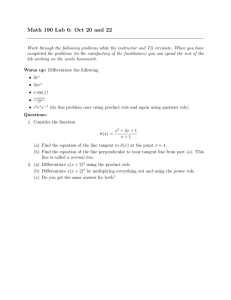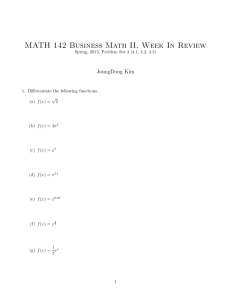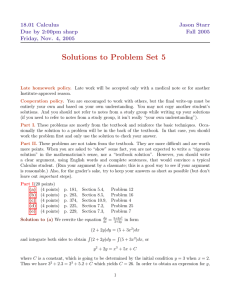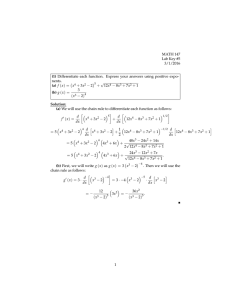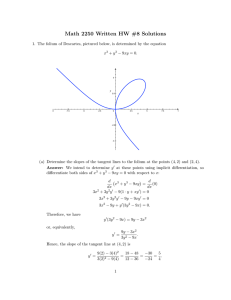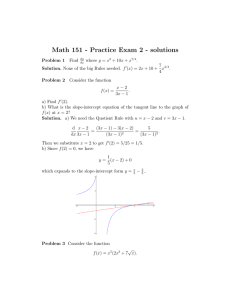Section 4.2: Basic Rules of Differentiation Theorem: (Differentiation Rules)
advertisement
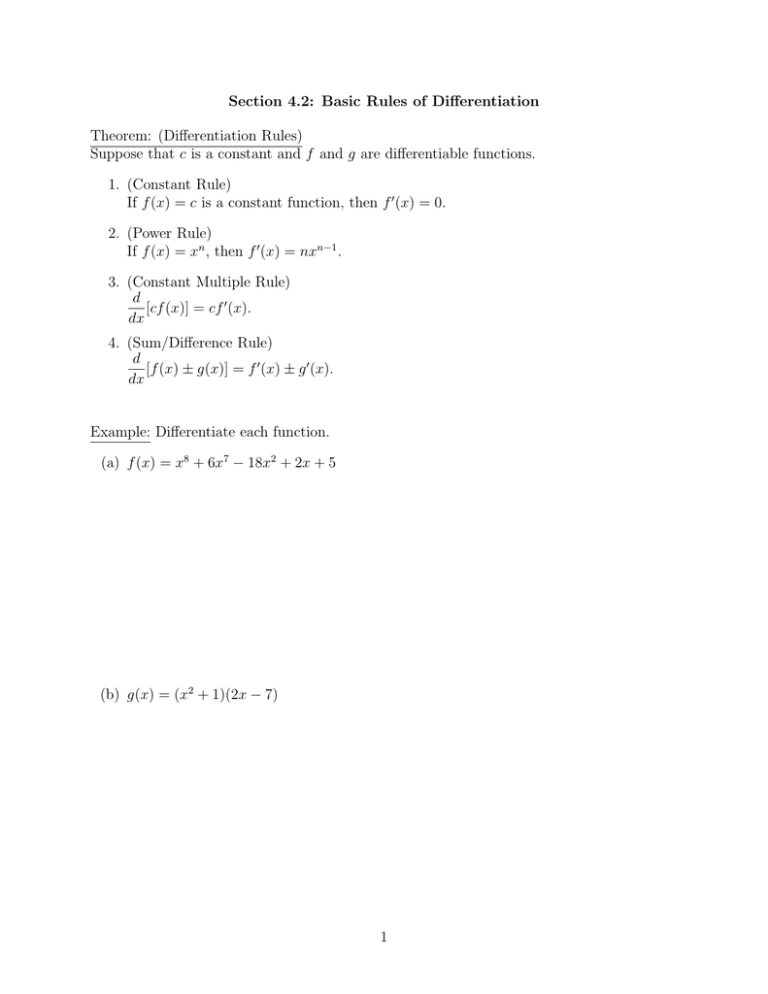
Section 4.2: Basic Rules of Differentiation Theorem: (Differentiation Rules) Suppose that c is a constant and f and g are differentiable functions. 1. (Constant Rule) If f (x) = c is a constant function, then f 0 (x) = 0. 2. (Power Rule) If f (x) = xn , then f 0 (x) = nxn−1 . 3. (Constant Multiple Rule) d [cf (x)] = cf 0 (x). dx 4. (Sum/Difference Rule) d [f (x) ± g(x)] = f 0 (x) ± g 0 (x). dx Example: Differentiate each function. (a) f (x) = x8 + 6x7 − 18x2 + 2x + 5 (b) g(x) = (x2 + 1)(2x − 7) 1 (c) h(x) = √ 1 x− √ x (d) f (t) = √ 2 3 2 t + t (e) R(x) = x2 + 4x + 3 √ x 2 Example: Consider the logistic growth equation dN = rN dt N 1− = f (N ), K where r and K are positive constants. Differentiate f (N ) with respect to N . Example: Find an equation of the tangent line to the graph of y = 3x2 − 4x + 7 at x = 2. Example: Find an equation of the normal line to the graph of y = 1 − 3x2 at x = −2. 3 Example: Find the points on the curve y = 2x3 + 3x2 − 12x + 1 where the tangent line is horizontal. Example: Find the points on the curve y = 2x3 − 4x + 1 where the tangent line is parallel to the line y = 2x + 1. 4 Example: Show that there are two tangent lines to the parabola y = x2 that pass through the point (0, −4). Find the equation of both tangent lines. 5
